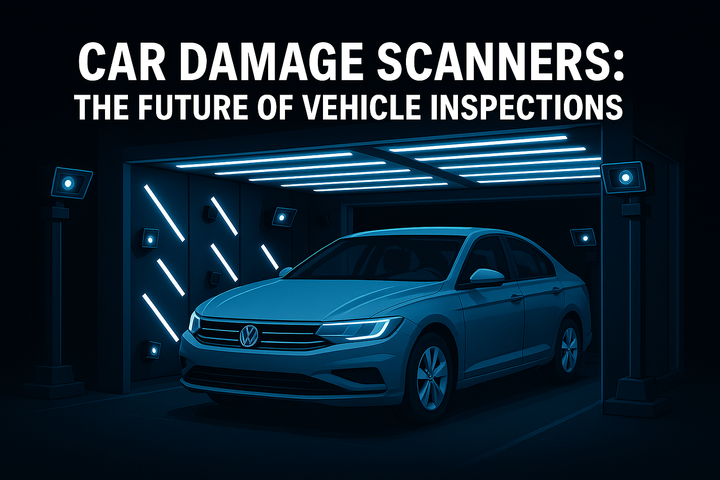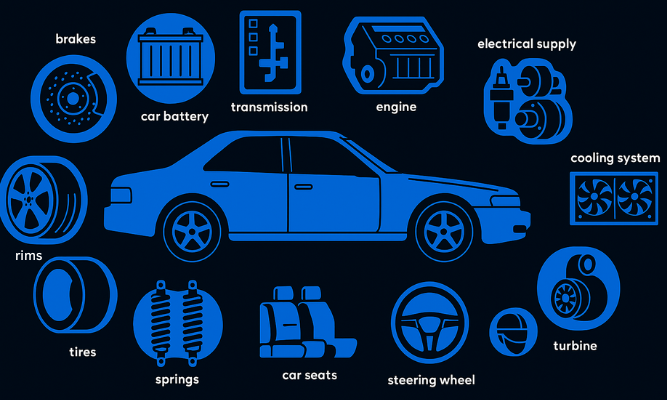Guidelines for Capturing Micro Damages Through Photos/Videos of a Damaged Vehicle | Inspektlabs
This post will discuss some essential guidelines users can follow for capturing micro damage through photos/videos of a damaged vehicle.

This post will discuss some essential guidelines users can follow for capturing micro damage through photos/videos of a damaged vehicle. We will begin with an introduction to micro damages and the challenges regarding capturing them. Then, we will discuss a fundamental guiding principle for all digital vehicle inspections. Our discussion will turn to the five salient guidelines for capturing photos/videos of a damaged vehicle, i.e., camera type, location, car type, lighting, background conditions, and framing and views for the damage.
What are Microdamages in Cars?
A Fundamental Guiding Principle
The Five Salient Guidelines for Capturing Photos/Videos Of A Damaged Vehicle
4. Lighting and Background Conditions
5. Framing And Views For The Damage
Introduction
Although not generally relevant to accident-related damages and repair shops or insurers, micro damages are still significant. They are relevant to the used car, car auction, and car leasing industries. Market players in these industries check the vehicle's general condition, including micro damages, to assess the car's value. For example, when buying or selling cars or at the end of a lease, it is vital to check the vehicle for very small damages that are difficult to capture in a photo or video. When conducting a digital vehicle inspection, you must be able to capture these micro damages to generate reliable vehicle condition reports. Let us look at the best approach to highlight these types of damages.
What are Microdamages in Cars?
This damage category includes paint scratches, scraped bumpers, or dents that don't affect the vehicle's functionality but may affect the vehicle's valuation during buying/selling of a car or when a lease is terminated. While most people don't mind a minor ding or scratch in the bumper, it's essential to have these minor repairs done before they become a significant issue. Over time, slight cosmetic damage can turn into rust spots that disintegrate metal. Because of their small size, capturing these damages through photos/videos can be pretty tricky. Micro damage can also be hidden in plain sight if the proper perspective is not set while capturing the photos/videos. However, there are specific techniques that you can use to ensure that these micro damages get highlighted in the photos/videos you capture.

A Fundamental Guiding Principle
Digital vehicle inspections, while they have many advantages over the traditional approach, there do have one considerable limitation. AI-based damage detection solutions are generally not very effective for damages not captured in photos and videos. In essence, AI-based solutions can detect only those damages that are visible in a photo/video. A traditional human inspector will also face this limitation, but they have the advantage of viewing the vehicle in person and revisiting any aspects of the vehicle that they overlook. For a seamless experience with your digital vehicle inspection, you must ensure that you capture the entirety of the car so that the analysis does not miss any damages. Now that we have established this core guiding principle let us look at the guidelines to help you capture a damaged vehicle.
The Five Salient Guidelines for Capturing Photos/Videos Of A Damaged Vehicle
We will split our discussion into the following five segments for the sake of clarity: camera type, location, car type, lighting and background conditions, and framing and views for the damage. Each section represents a guideline. Let us review each guideline in detail to strengthen our understanding further.
1. Camera Type
Broadly speaking, any smartphone camera will be sufficient for capturing damages. Your smartphone camera will most likely suffice if it can take pictures in dimensions > 500 x 500 pixels. If your camera possesses this minimum requirement, it is capable enough to capture damage to the car. Naturally, the better your camera, the more detail it can capture. Therefore, utilizing the best available camera to capture your vehicle is advisable.

2. Location
The car's location while you capture photos and videos can be crucial in determining the quality of the media. The car's location is essential because you need to ensure that the vehicle receives ample light, but also because you need to in short enough space to maneuver. When recording a car, you must capture a 360-degree view which entails going around the vehicle. If you place your car in a confined space, this does not leave much room for you to move around, and you will face issues while recording. In terms of indoors vs. outdoors, both indoor and outdoor capture works as long as 'lighting and background conditions' and framing and views for the damage' are proper.
3. Car Type
Unlike the other guidelines in this list, your car type is something that you have no control over. However, please understand that detecting damages on specific vehicle types is more challenging than others. For example, within car colors, the detection of micro-damages on dark metallic-colored cars is generally challenging. However, with proper 'lighting and background conditions' and 'framing and views for the damage,' micro-damages on dark metallic colored cars can be captured. If your vehicle has these features, which make it slightly more complex to capture micro-damages, please ensure that you pay additional attention to our guidelines.
4. Lighting and Background Conditions
This factor is highly crucial when determining the quality of your capture. There are certain favorable lighting and background conditions that you need to remember. If you are conscious of these factors, you can mitigate some of the complexities of reflective car panels. However, if you are not careful, poor lighting and background conditions might make the captured media unhelpful for damage detection. Let us take a closer look using some real-life illustrations.
- Avoid reflections or glare from the background – It is imperative to avoid reflections or glare because the car's body may act as a mirror due to background reflections. As you can observe in the images below, a highly reflective car panel makes detecting damage challenging. Therefore, please minimize such reflections or glares as much as possible.


- Avoid low light conditions – Low light conditions, such as the ones depicted in the image below, are not ideal for damage detection. As you can see, the vehicle is not visible due to the low light. The low-light issue is exaggerated with micro damages because these types of damages will go undetected in such lighting conditions.

- Avoid strong light sources from behind the car – If there is a bright light source, like sunlight, that is directly behind the vehicle, the photos and videos captured will be dark and unclear. As you can see from the images below, this lighting condition is inappropriate for capturing a vehicle's condition. Despite the car being in sunlight, one side of the car is not clearly visible. So, it is vital to avoid light sources from behind the car.


- In some situations, fixed cameras and light diffusers may be required – In certain situations, capturing a vehicle may not be feasible without some additional infrastructure. In these cases, fixed cameras and a lighting setup such as light diffusers prove helpful. In some situations, fixed cameras and diffusers may be required to control lighting and background conditions. This approach requires a somewhat elaborate setup, but body shops can adapt these technologies into their workflow. These frameworks produce highly accurate captures because the vehicle is captured in a controlled environment.


5. Framing And Views For The Damage
How you set up your camera's frame can be quite decisive in the quality of the capture. You can leverage some basic framing techniques to ensure you do not miss micro damage while capturing your car. Let us consider some of these techniques.
- Zoom-In And Zoom-Out Features – If you are trying to capture and highlight specific micro damages, you can utilize the zoom feature in your camera. Users can capture vehicles using the zoom-in (15-20 cm), and the zoom-out (100-150 cm) features for micro damages. As you can see from the images below, a zoomed-in perspective can highlight damages that the zoomed-out perspective does not.


Below is another example that illustrates the importance of zooming in. The micro-damage depicted in the images below is undetectable when zoomed out. However, when zoomed in, the damage becomes visible and identifiable. Users should capture a zoom-in view with 30-60° degrees from the damage (rather than 90°) for small dents. Furthermore, they need to use the background reflection to enhance damage visibility.


- Camera Height – Another critical factor you must ensure is the angle at which you click the picture. Generally, the best approach is to set the camera at the same height as the damage. This approach will allow you to capture the full extent of the damage. Below is an image clicked at an appropriate angle to capture the damage.

- Zebra Reflectors – In some situations, you can use zebra reflectors – fixed or mobile, to capture small dents. These reflectors can highlight the most minute damages by providing a detailed and thorough perspective. An example of this technique is shown below. The damage stands out because there is a curve in the parallel zebra lines.




